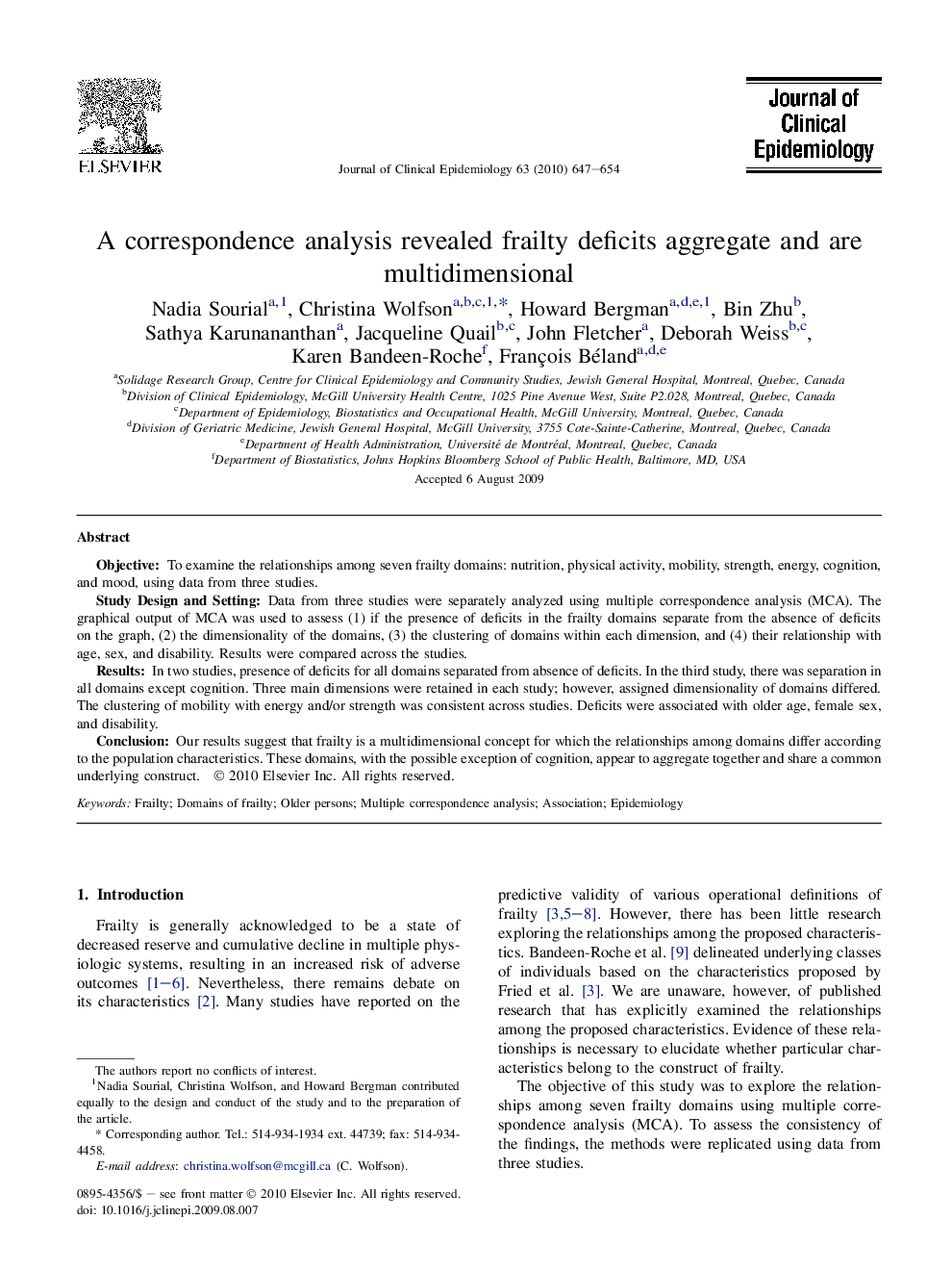| Article ID | Journal | Published Year | Pages | File Type |
|---|---|---|---|---|
| 1082649 | Journal of Clinical Epidemiology | 2010 | 8 Pages |
ObjectiveTo examine the relationships among seven frailty domains: nutrition, physical activity, mobility, strength, energy, cognition, and mood, using data from three studies.Study Design and SettingData from three studies were separately analyzed using multiple correspondence analysis (MCA). The graphical output of MCA was used to assess (1) if the presence of deficits in the frailty domains separate from the absence of deficits on the graph, (2) the dimensionality of the domains, (3) the clustering of domains within each dimension, and (4) their relationship with age, sex, and disability. Results were compared across the studies.ResultsIn two studies, presence of deficits for all domains separated from absence of deficits. In the third study, there was separation in all domains except cognition. Three main dimensions were retained in each study; however, assigned dimensionality of domains differed. The clustering of mobility with energy and/or strength was consistent across studies. Deficits were associated with older age, female sex, and disability.ConclusionOur results suggest that frailty is a multidimensional concept for which the relationships among domains differ according to the population characteristics. These domains, with the possible exception of cognition, appear to aggregate together and share a common underlying construct.
